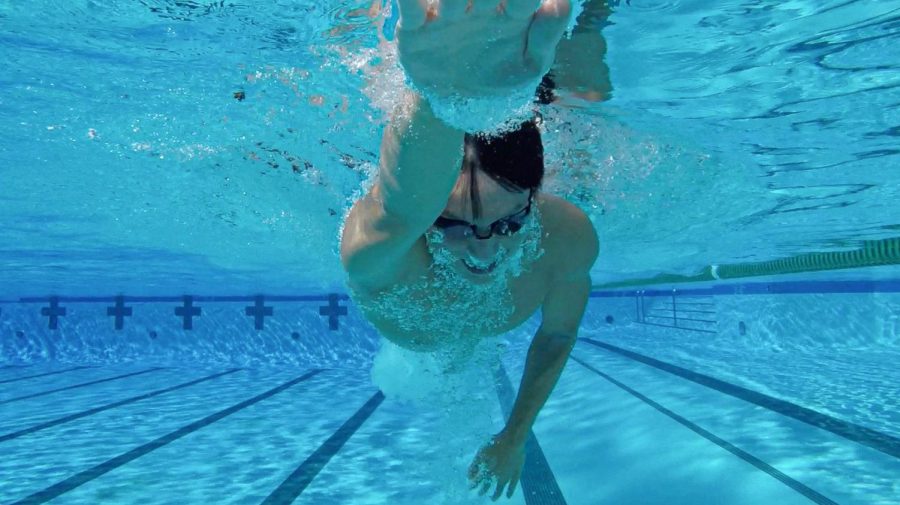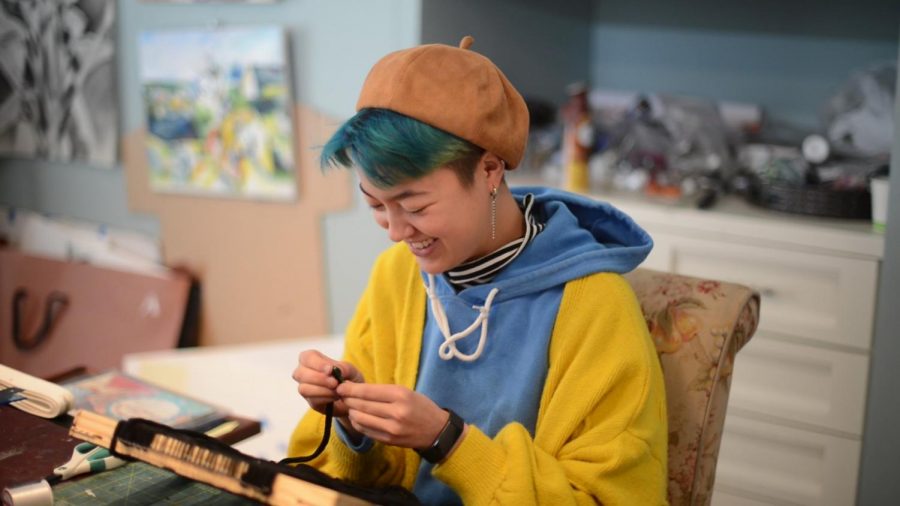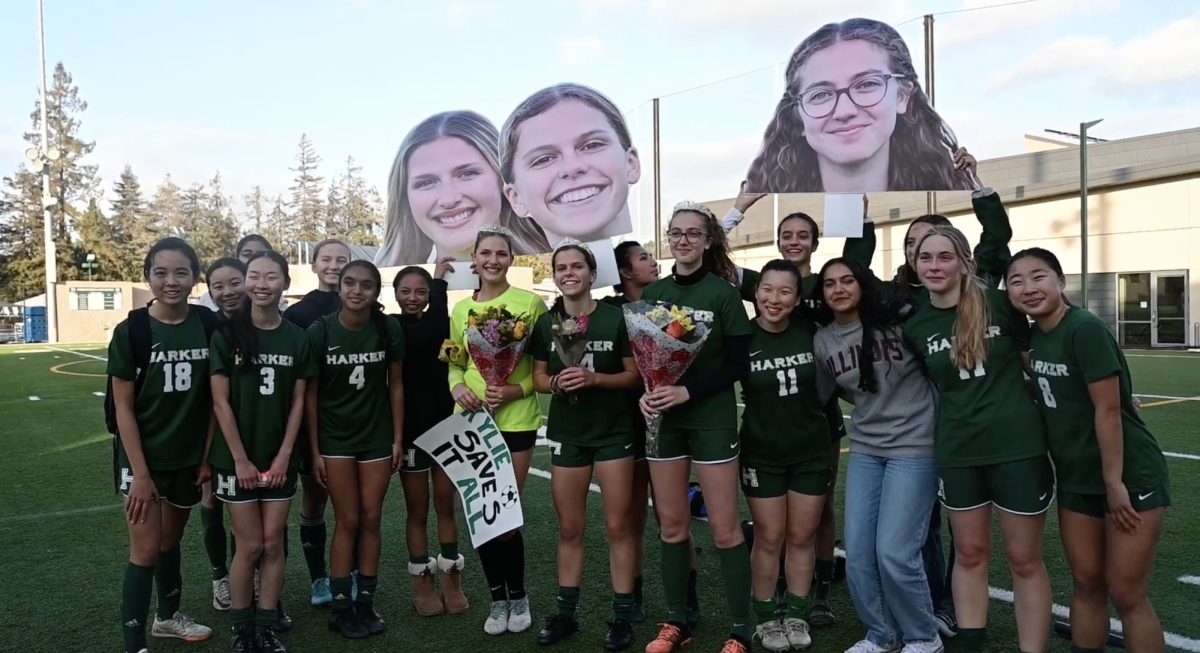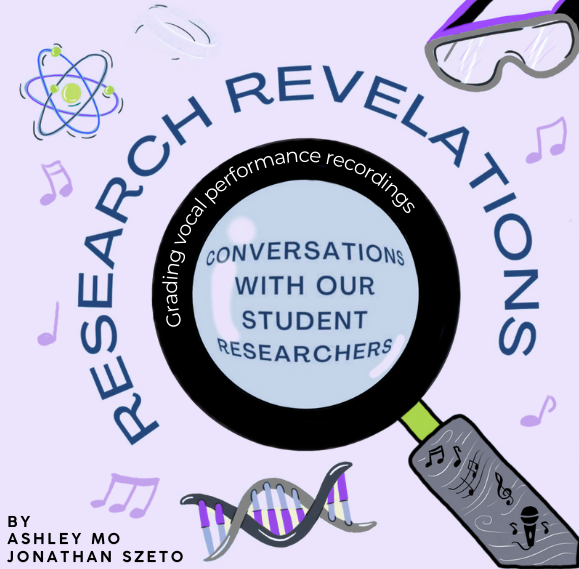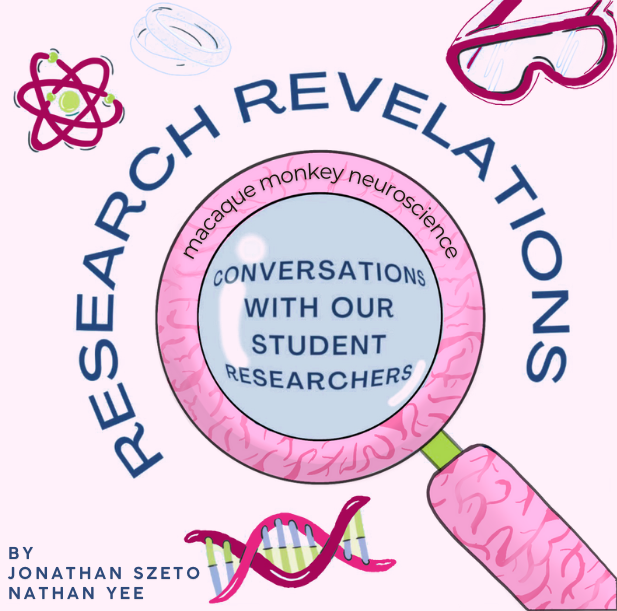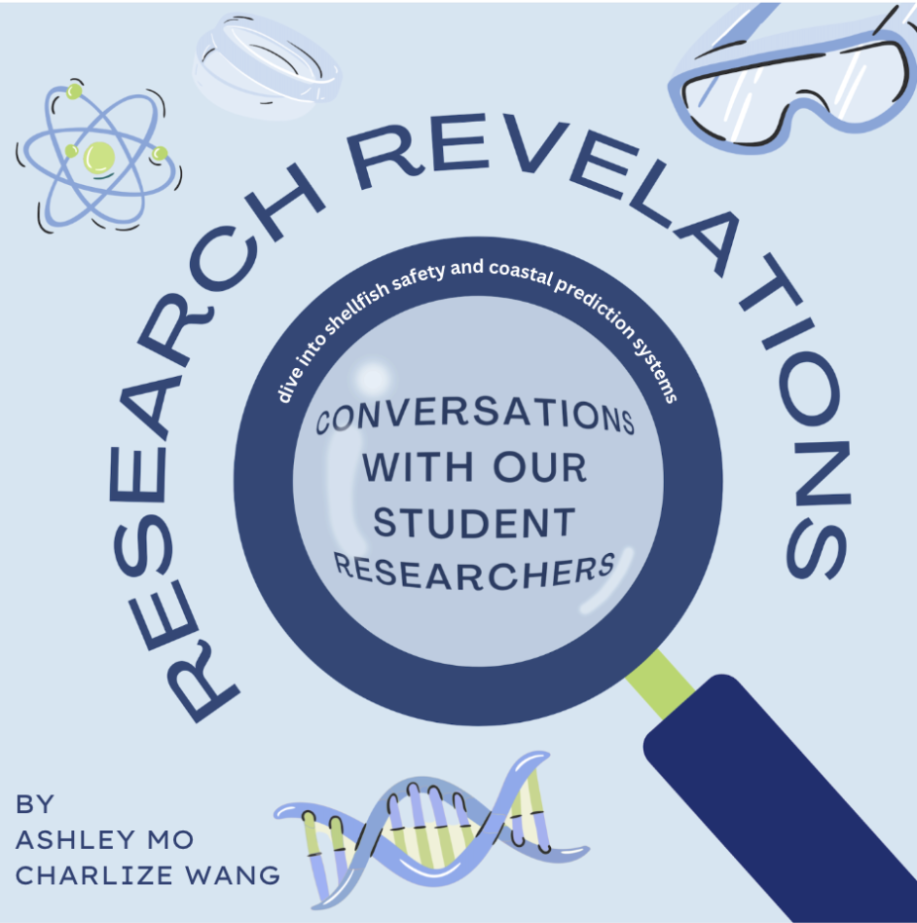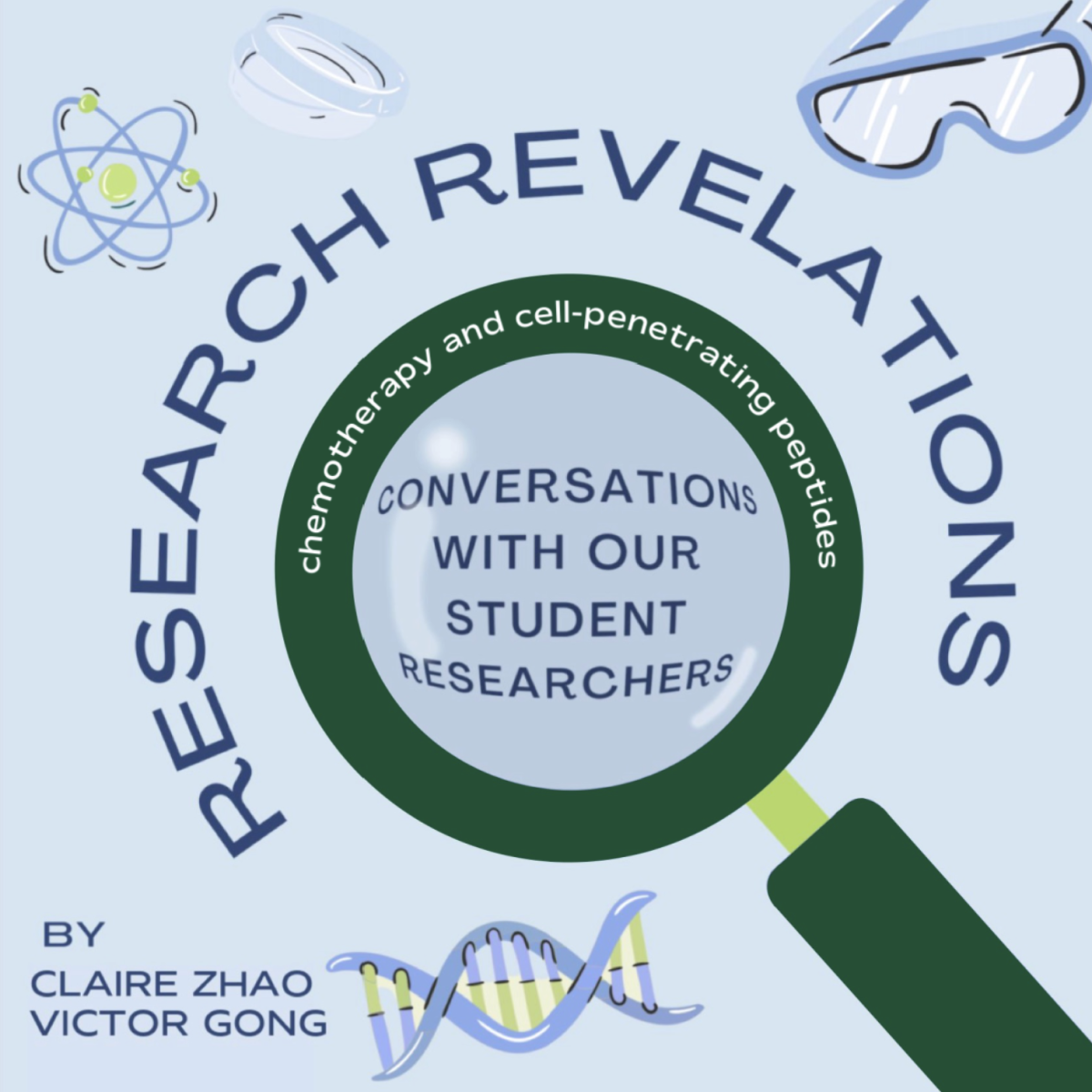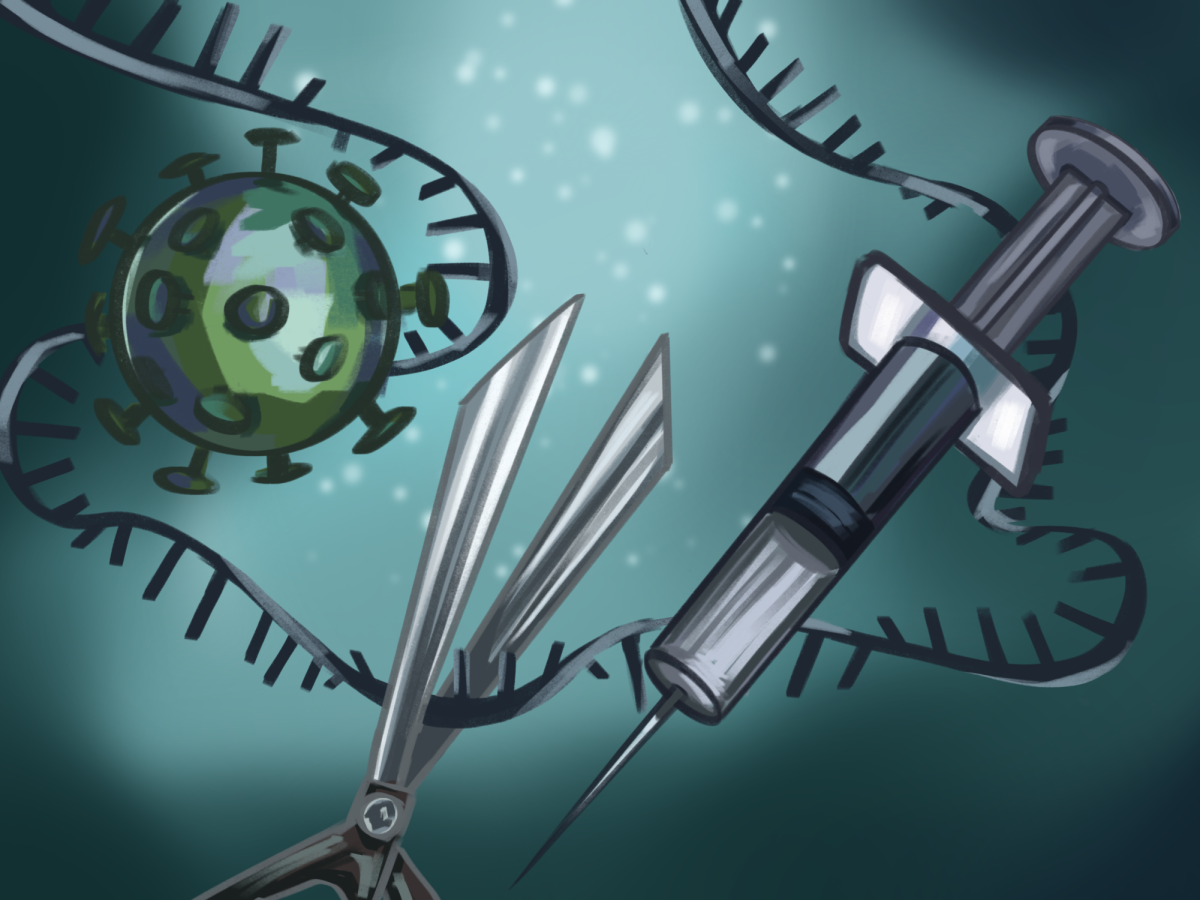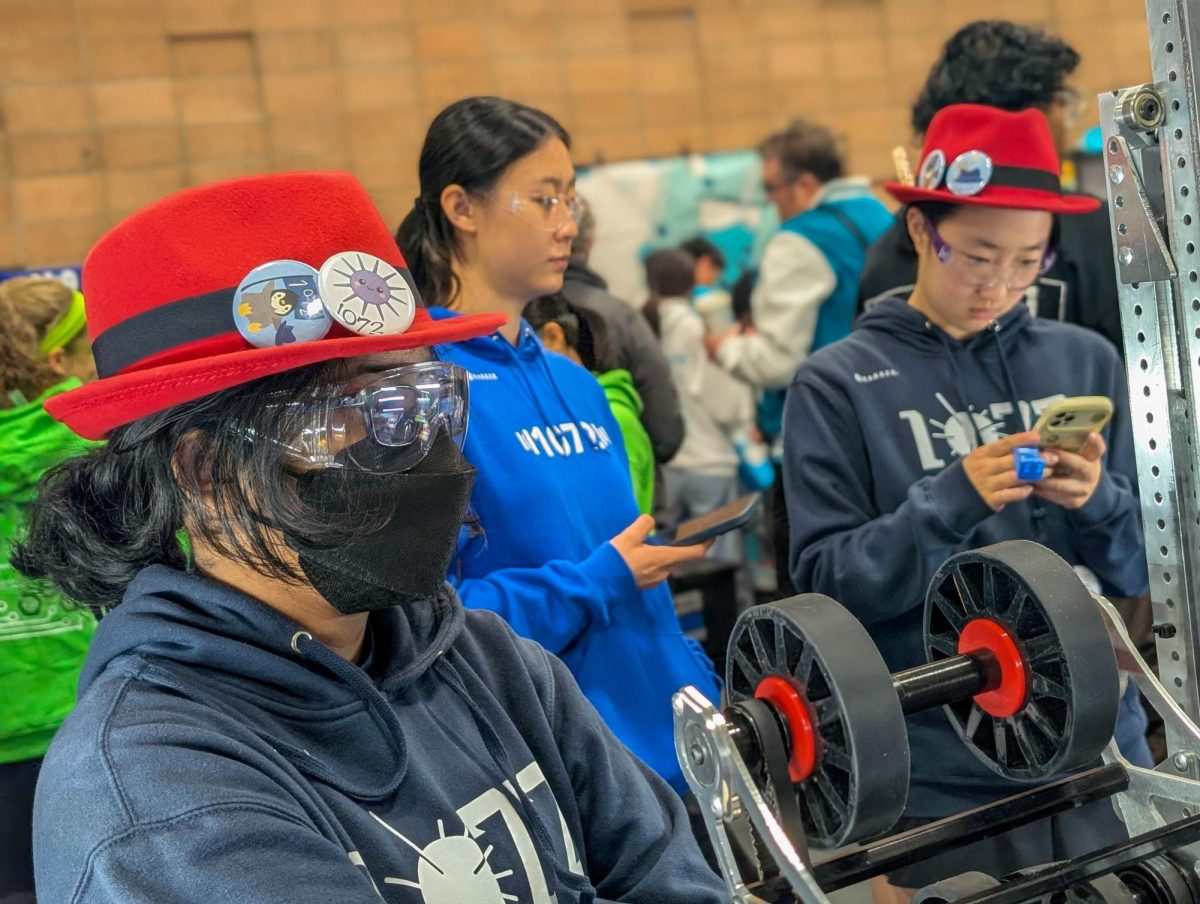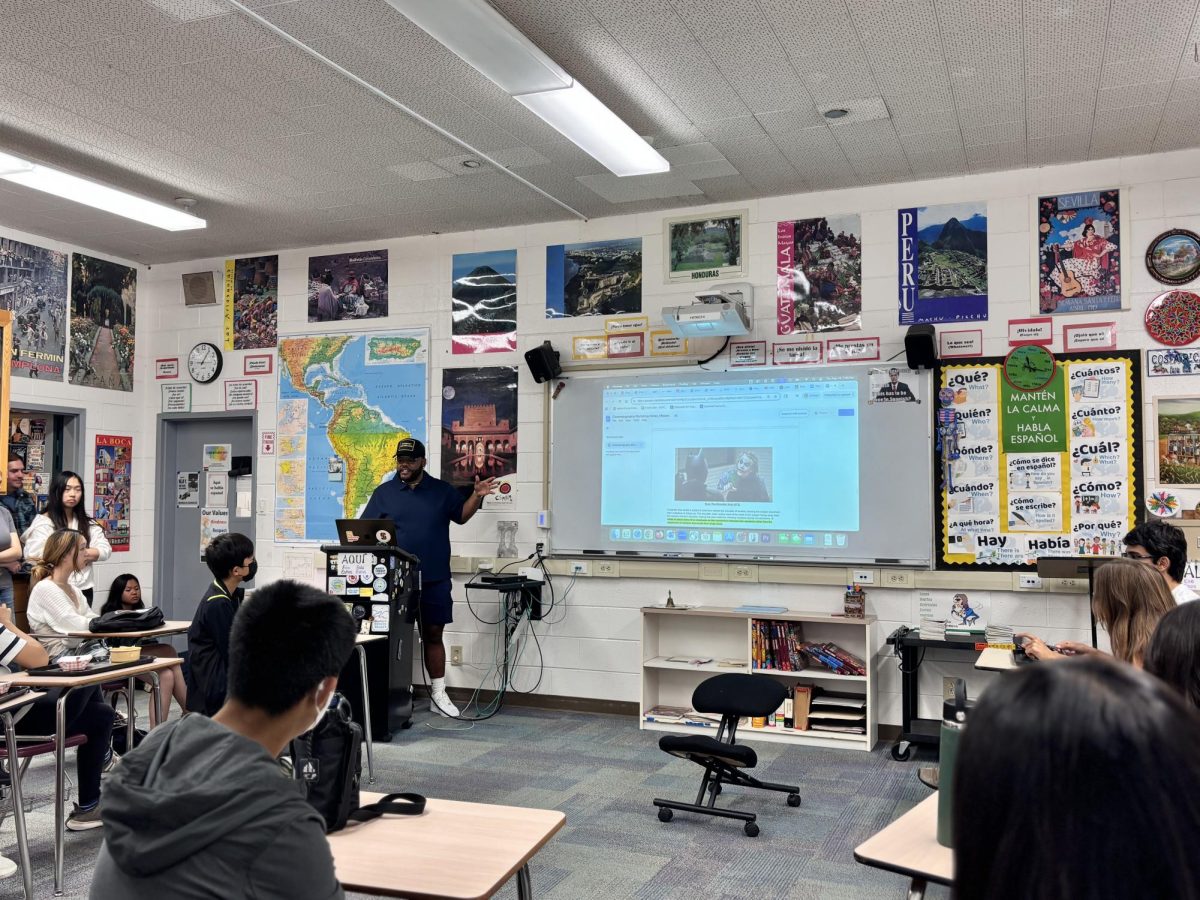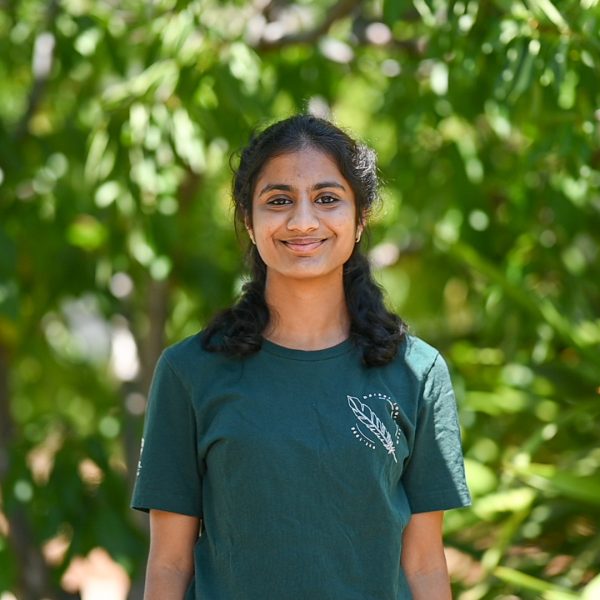This is the tenth installment of Research Revelations: Conversations with Our Student Researchers, a podcast where Aquila staff members talk to student researchers about their projects and research goals. In this episode, A&E/Lifestyle Editor Suhani Gupta and Assistant News Editor Lily Peng meet with Terry Xie (11) to discuss his work diagnosing cardiovascular disease using gut microbiomes.
Suhani: Hi everyone, I’m Suhani.
Lily: I’m Lily.
Suhani: And welcome back to Research Revelations: Conversations with our student researchers.
Lily: Today, we’re with junior Terry Xie to talk about his research on using the gut microbiome to diagnose cardiovascular disease.
Suhani: Thank you so much for joining us, Terry. I want to first ask, what is your research about?
Terry: Yeah, of course, thank you for having me. So my research is about using the gut microbiome, which is a community of microbes, primarily bacteria, that live inside every person’s gut, and using that to diagnose cardiovascular diseases. There’s actually been research that has established links between imbalances on the levels of these respective bacterial species with cardiovascular disease. My research is about using machine learning to sort of look at these imbalances and try to diagnose cardiovascular disease from that. There has been previous research done on this topic actually. What I thought was that I had a deeper dive, where previous users were just looking at the levels of how much of each bacterial species there was, but for me, that’s not the actual sort of physiological basis behind it. The basis behind the connection between cardiovascular disease and their gut microbes is that the microbes are taking the food that you’re eating, and then they’re doing their own sort of metabolic processes on it, and then they’re making metabolic products which are then taken into your bloodstream. Then, that has an effect on cardiovascular disease. I wanted to look at the actual metabolites that are being produced, not the levels of bacteria, because that’s what’s actually affecting cardiovascular disease in the end. My research uses a flux balance analysis, which is a way of simulating computationally the production of a community of microorganisms, using that analysis to get a number of metabolites that these microbes are producing and then using that to then diagnose cardiovascular disease.
Lily: We want to know why you chose this topic, and what got you interested in it?
Terry: Yeah, so I was interested in heart disease to start out with, and then I was reading a bunch of articles about heart disease, and I actually stumbled across this connection, and I thought that was very interesting because you would’’t normally think of the heart as having a connection to your gut microbes, but there is this connection and I thought that was something interesting that I could explore.
Suhani: Can you walk us through the steps you took in your research project, and what the end result was?
Terry: First off was picking a topic, which is always a difficult process, because it’s so uncertain. That is definitely something that I was a little intimidated by. There’s so much you could potentially think about, but I narrowed it down to cardiovascular disease, and then as I talked about, I saw this connection, I thought it was interesting, so I decided that that was the pathway I wanted to sort of explore. And then specifically, there was this one paper on this topic of doing ML analysis to predict CD, so I thought that was interesting, I noticed a problem with that, which was that its accuracies weren’t very high, and that’s because it wasn’t looking at the actual physiological basis. So that’s kind of how I got started on my research. Then actually conducting the research, it was a lot of reading more papers, doing a lot of code, because that’s primarily what the research is about — doing code for the ML and also the metabolic model. That required a lot of background knowledge and research on the internet on how to do this stuff. The final result was my own, individual model that I made; it had a whole process where first they calculated a gene expression coefficient, because just doing a flux balance analysis and using that, it’s not accurate enough because there’s a whole host of limitations with these types of simulations. Not counting in gene expression is a big limitation, because that results in really inaccurate metabolite levels, so I had to correct for that by using another ML to get a sort of stand in for gene expression and then using that to incorporate into my metabolic models. That whole process gets metabolite levels, which I can then use to diagnose CBD. So the end result was this AI model that can diagnose CBD from metabolite levels.
Lily: Through this whole process, what were some major challenges or setbacks?
Terry: Because I did this by myself in my house, the big challenge was direction in general. I’m not really an expert in this field, so I don’t have an idea of the big picture of what’s going on here, what there is to actually innovate and what directions there are to pursue. That was a huge challenge for me. You have to go through all these different papers to see what has already been done, what you need to do and what could be valuable to the scientific community. One thing that did help was cold emailing an expert in the field, his name is Dr. Hayson. He pointed out the gene expression to me, and he also discussed with me a little bit over email about my research in general.
Lily: With that, were there any major milestones or breakthroughs?
Terry: The first major milestone was getting the flux balance analysis to actually spit out some reasonable numbers, and that was after incorporating gene expression. Before, I had the flux analysis, but it was now really accurate. I reached out to this professor, and then he told me about gene expression. After adding that in, seeing actual reasonable results that are changing the way I expect them to, that was like a huge success for me.
Suhani: Tying into that, what would you say was your favorite part of the research process?
Terry: The ending part, training the AI models, because I think it’s really rewarding to see all this hard work getting turned into actual results, seeing these connections form and seeing these numbers that you get. You get a bunch of numbers that you can’t necessarily interpret yourself — it’s just thousands of metabolites with their respective levels, so seeing that being turned into an actual diagnosis, that was something I really enjoyed — the process of doing something that was really rewarding when it ended up working out.
Lily: And what would you say was your biggest take away from your research?
Terry: Aside from all the actual knowledge and experience I gained, I think the biggest thing for me was reaching out. I talked to the professor, and he was really happy, really willing to help out. I used to be a little intimidated at cold emailing a college professor, like you don’t really know them. You don’t know what they’ll think of you. They’re way more experienced than you are, right? But I think going through this whole process really showed me that like these people are at the end of the day interested in their fields. They’re really willing to help student researchers out, because they want to see you grow into somebody that could potentially have a big impact on this field. In general, it made me more interested in research, and it also lowered that intimidation factor.
Lily: Do you have any future goals for your project?
Terry: As of right now, I’m trying to make the simulation better, because there’s a lot of simplifications that you have to make. I mean, the human body is really complex, so there’s a lot of things that you just can’t account for. I was limited to like a stretch of the summer and a little bit of the school year, so I didn’t really have time to factor in a lot of things I wanted to get into, like expanding gene expression for one. Then also, with results, I want to take my model and see how it’s actually making these predictions, because that’s a big thing with AI — you don’t really know how it’s making these predictions. Looking at which metabolites it’s using to make these choices would be interesting in the future.
Suhani: What do you think the overall impact of your project is?
Terry: It’s an easier method of diagnosing cardiovascular disease that could definitely be seen in use in the future. Currently, you have to do a bunch of different tests like angiographies, ECGs, stuff like that. That’s expensive, it’s time consuming for doctors, and also it’s not really accessible, especially in third world countries. With this method, all you need is a stool sample, and then you can just send it to a lab anywhere in the world, and you can get a diagnosis back. That’s much more accessible, much more efficient. Beyond just cardiovascular disease, the gut microbiome has connections to a lot of different diseases, like for example diabetes, like inflammatory bowel disease. There are so many different diseases that are correlated with imbalances in your gut microbes and what they’re producing. I think this type of method could be applied to so many different diseases, and then you could get a generalized diagnosis for a bunch of different things from just one stool sample.
Lily: What would be one piece of advice you would give to someone who maybe is just starting research?
Terry: When you just start research, there are so many possibilities and so much information out there that’s really overwhelming. My advice would be to not be intimidated to be willing to jump in. Get started, look around, try to narrow it down to what you’re interested in. Also, a big thing for me was don’t be intimidated by reaching out. These people, these scientists are willing to help you out. They are interested in seeing you grow, seeing you contribute to the academic field. Even if they don’t respond to you, don’t take that as something against yourself, because they are at the end of the day really busy, so maybe send it to someone else.
Suhani: Thank you for your time, Terry.
Lily: If you are a student researcher and would like to be featured next, please feel free to email us at [email protected].
Suhani: This is Suhani.
Lily: This is Lily.
Suhani: And we’ll see you next time.

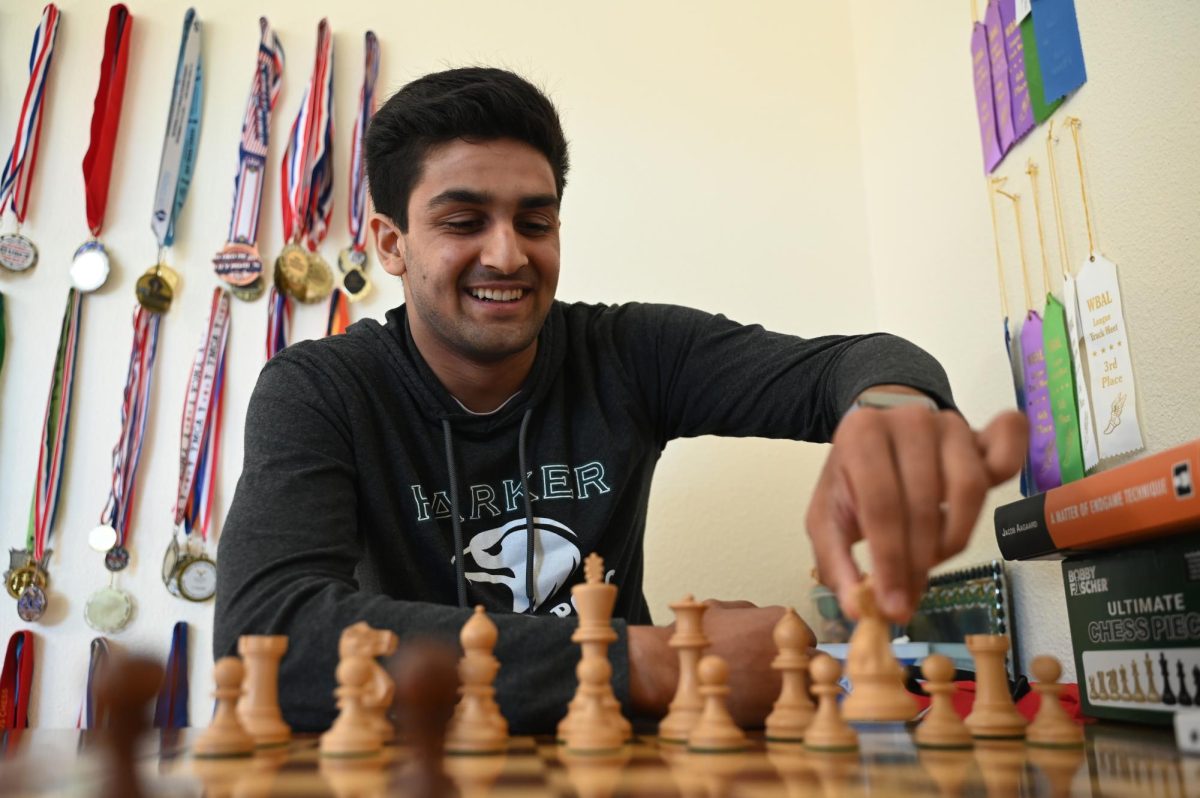
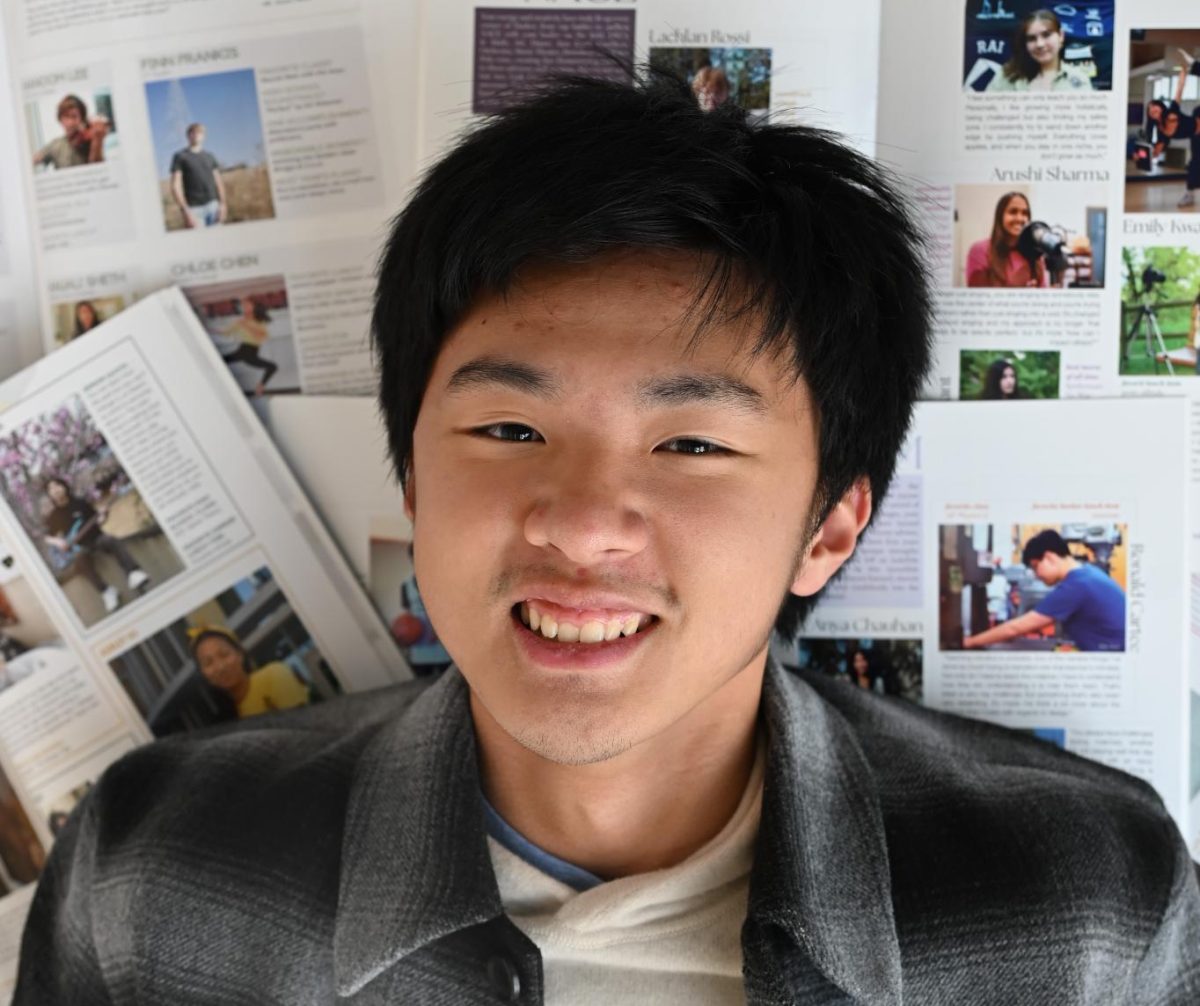
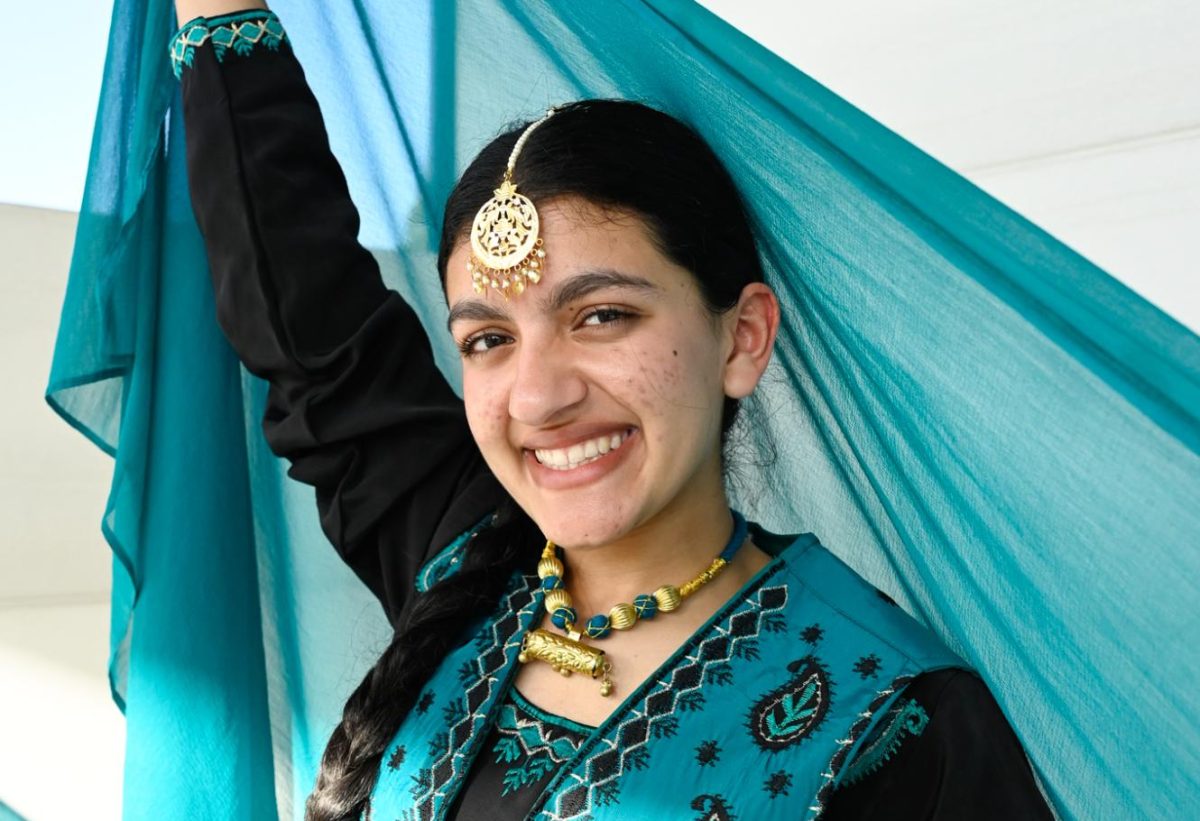
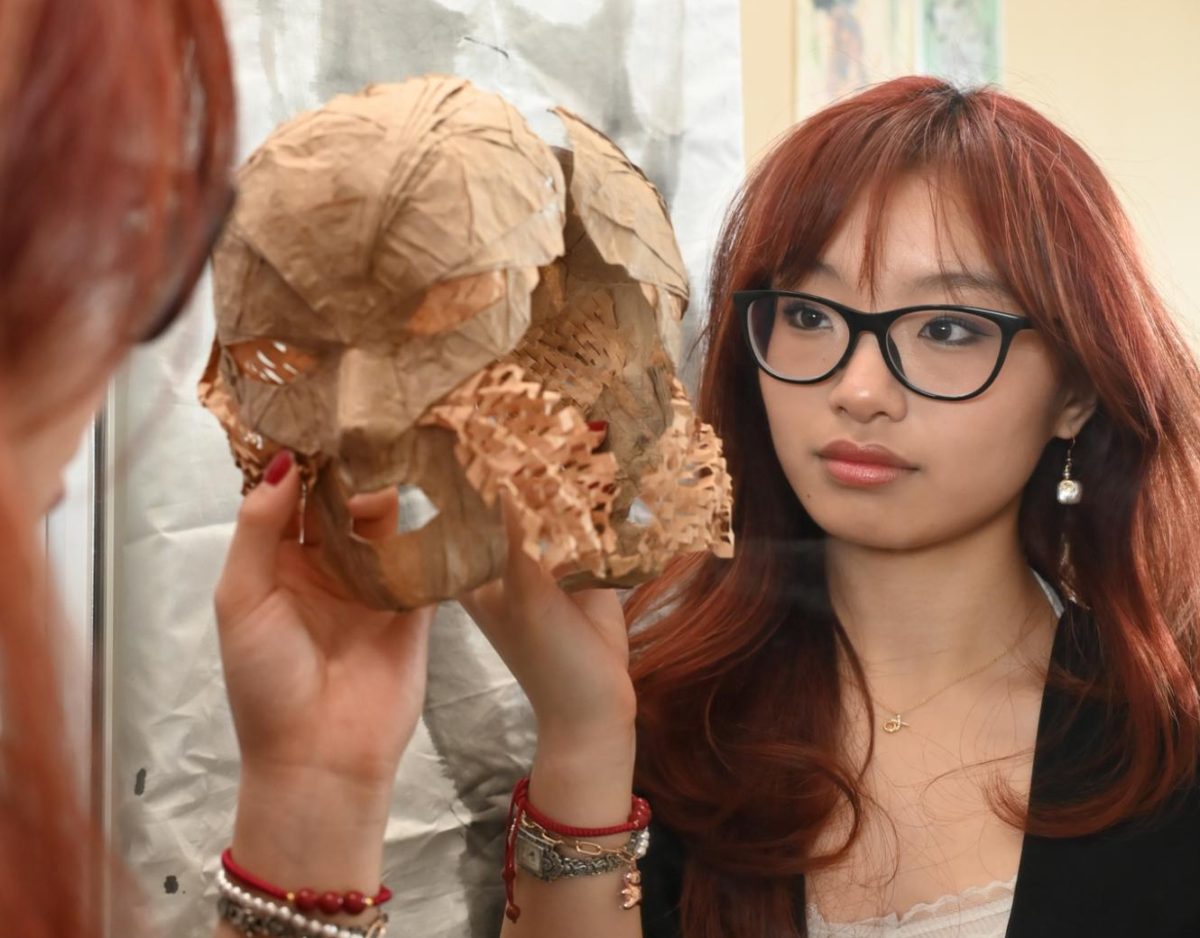
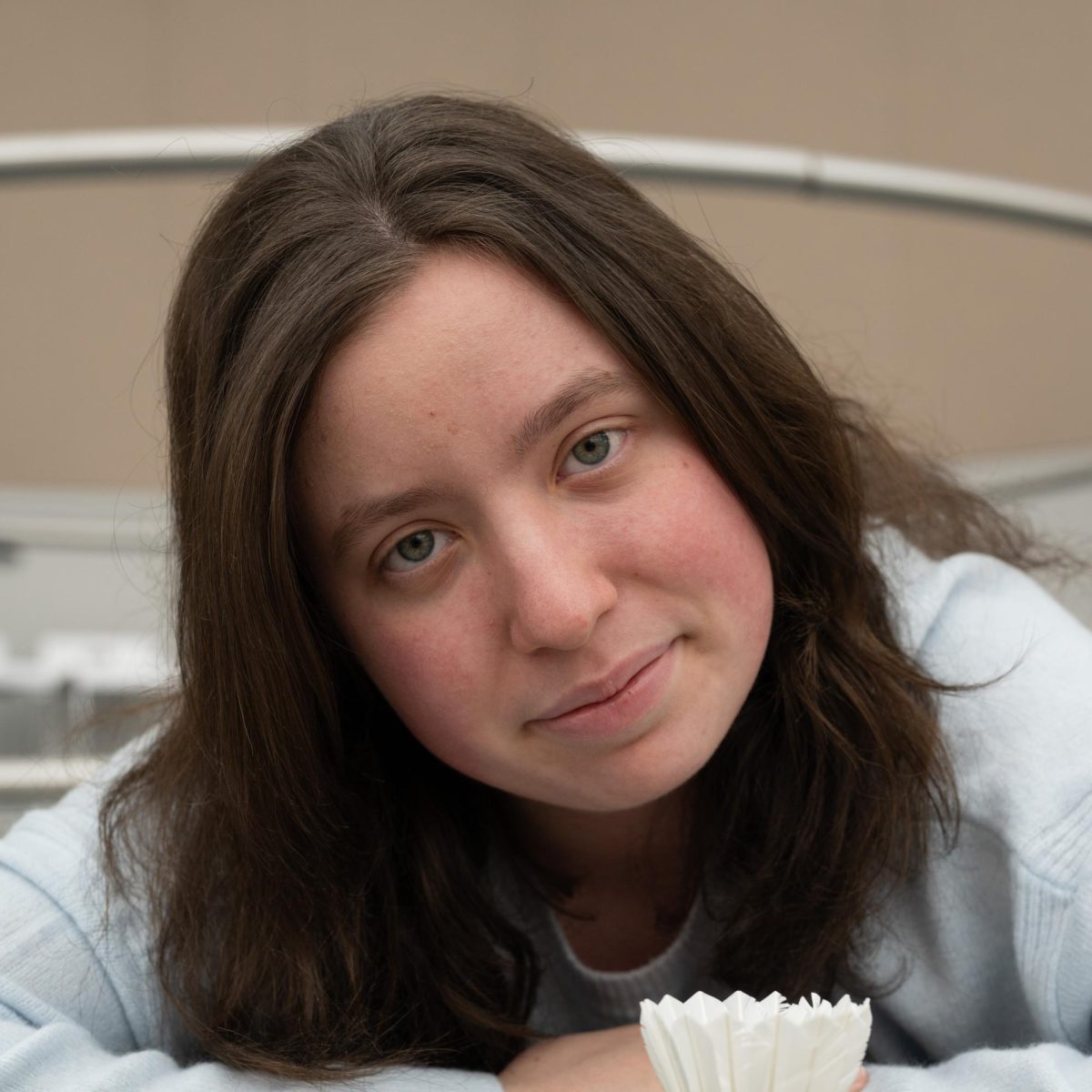
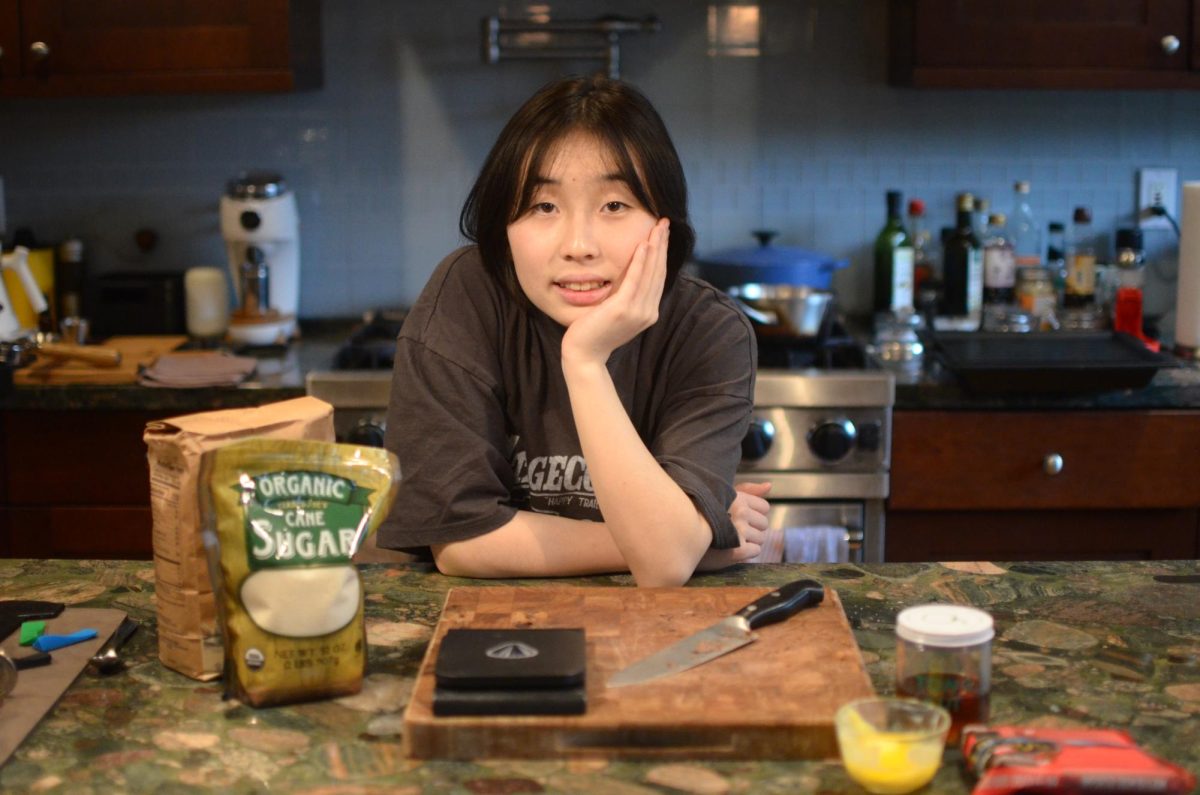


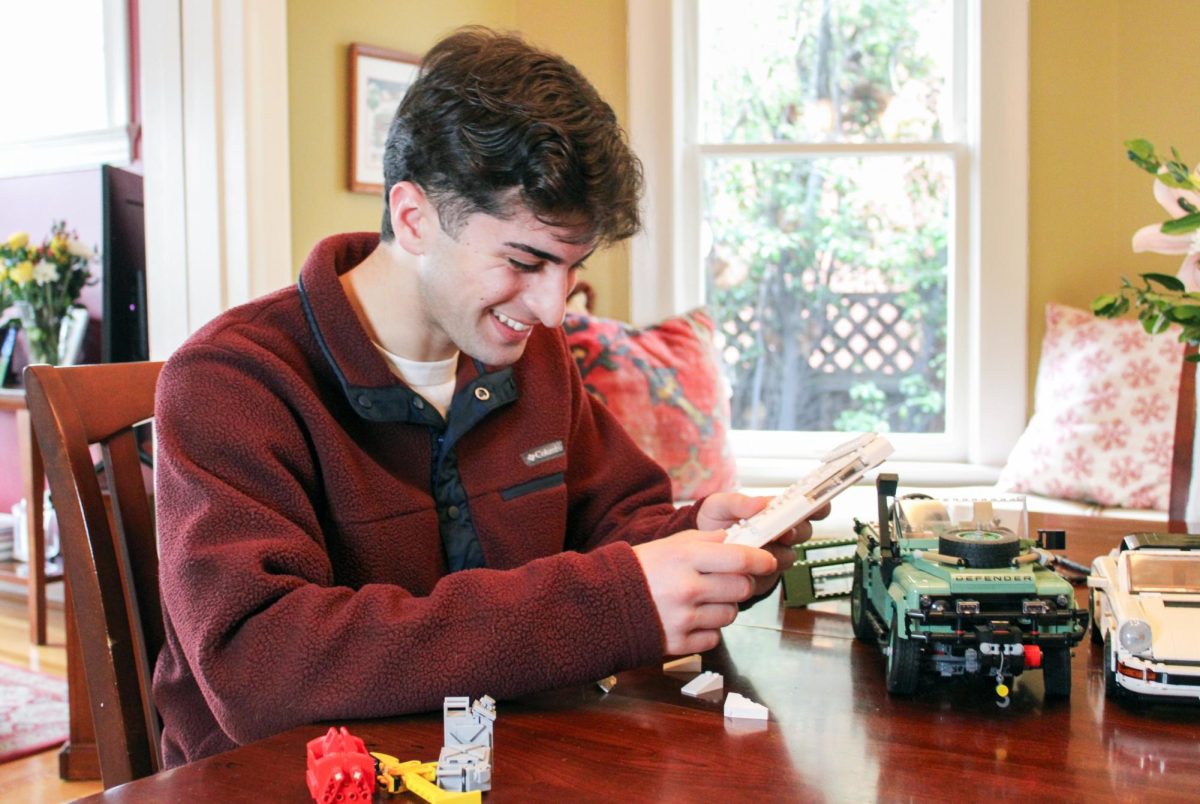
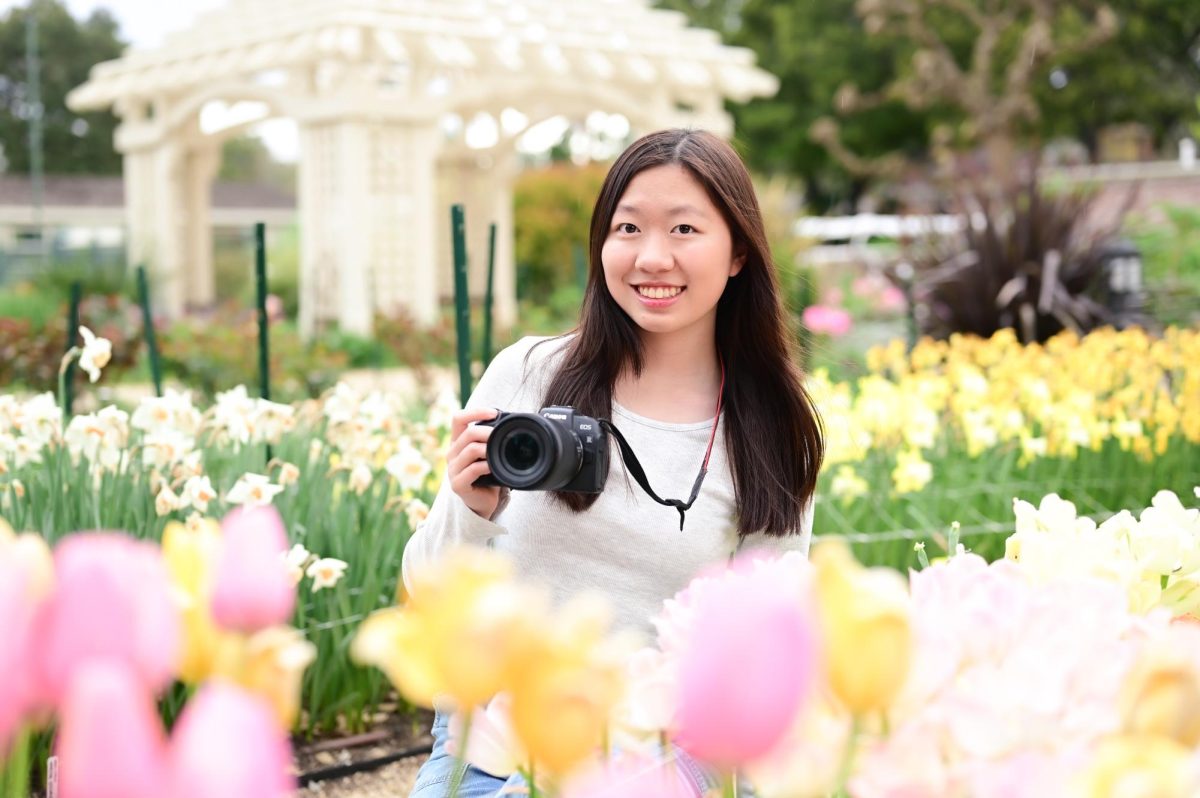
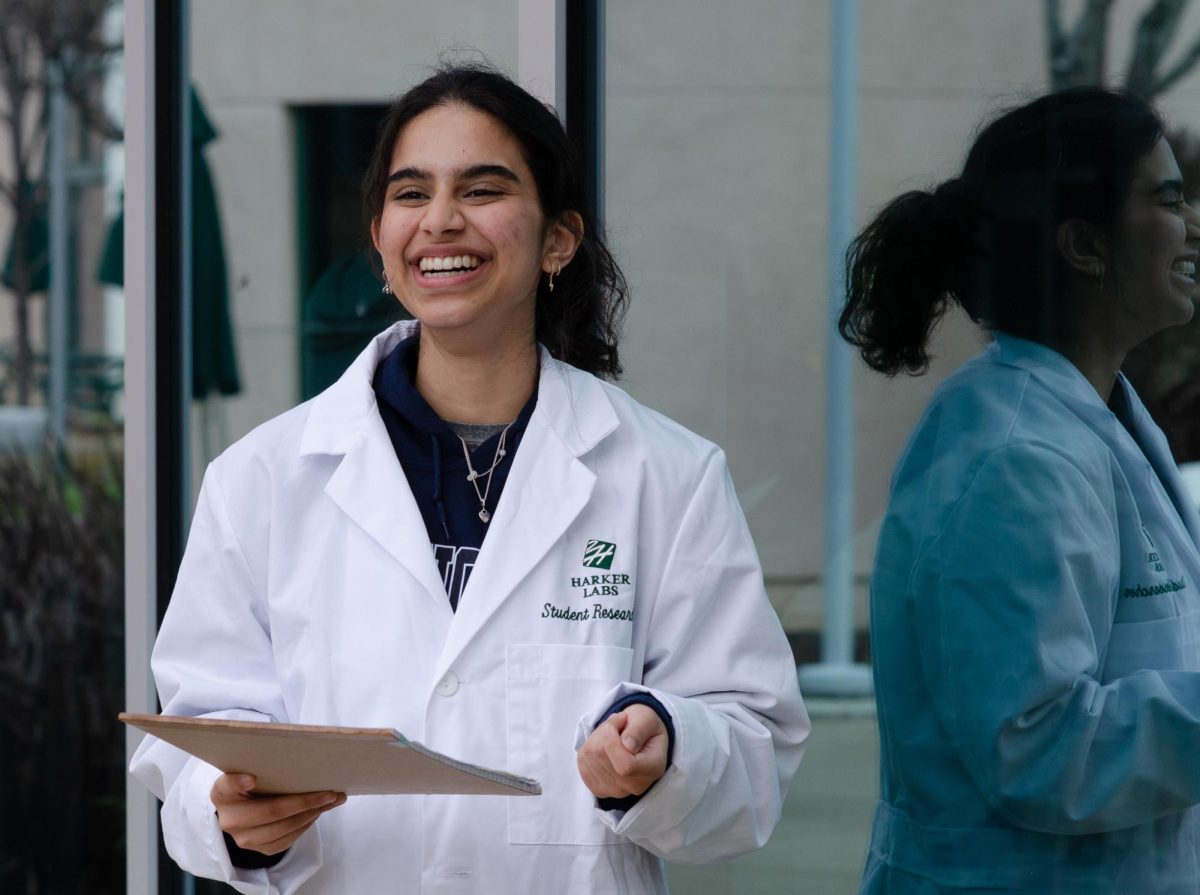
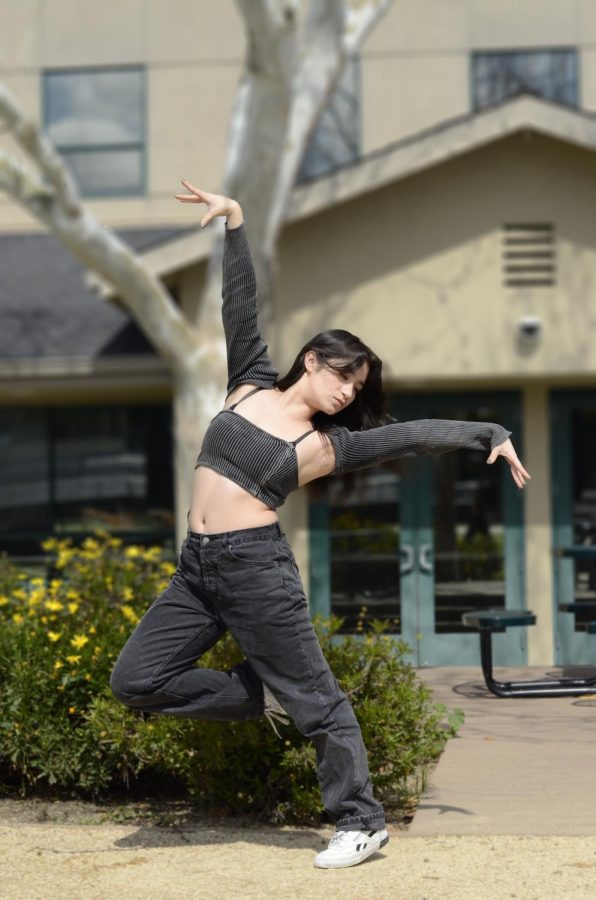
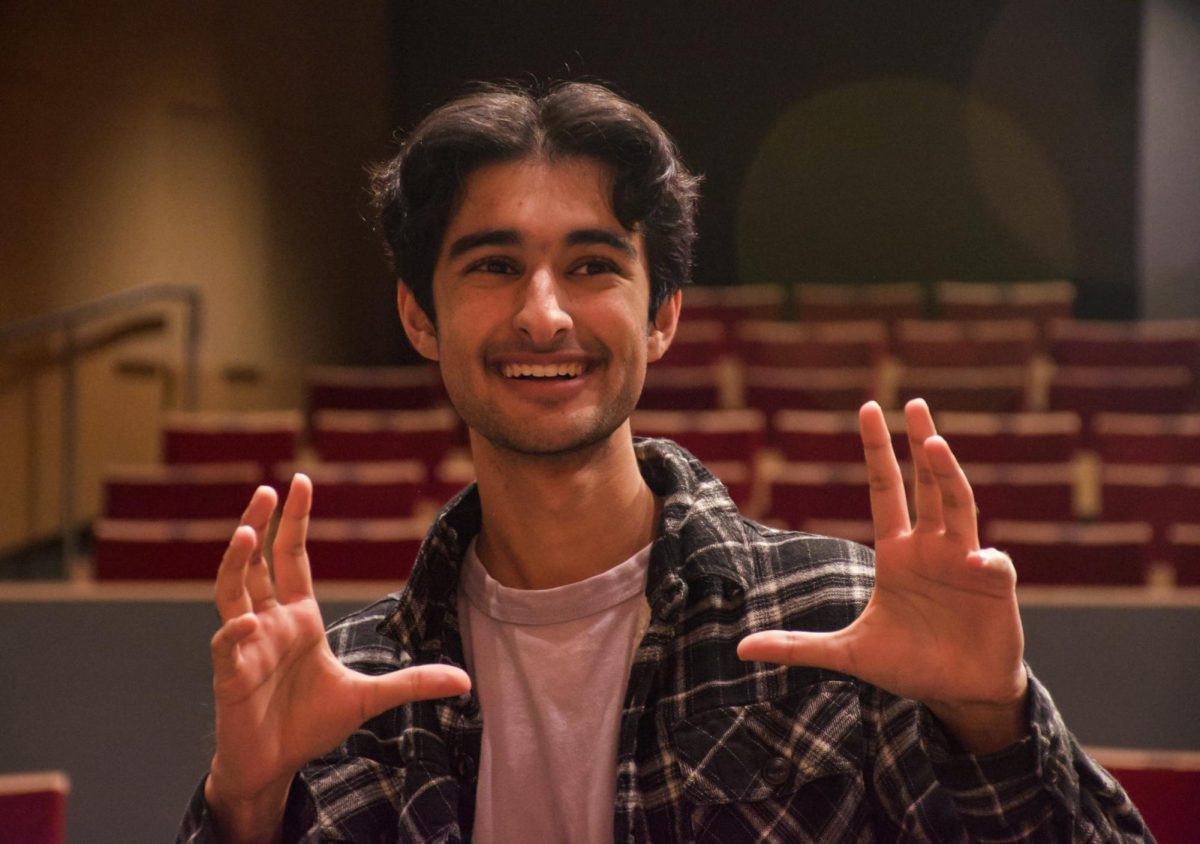
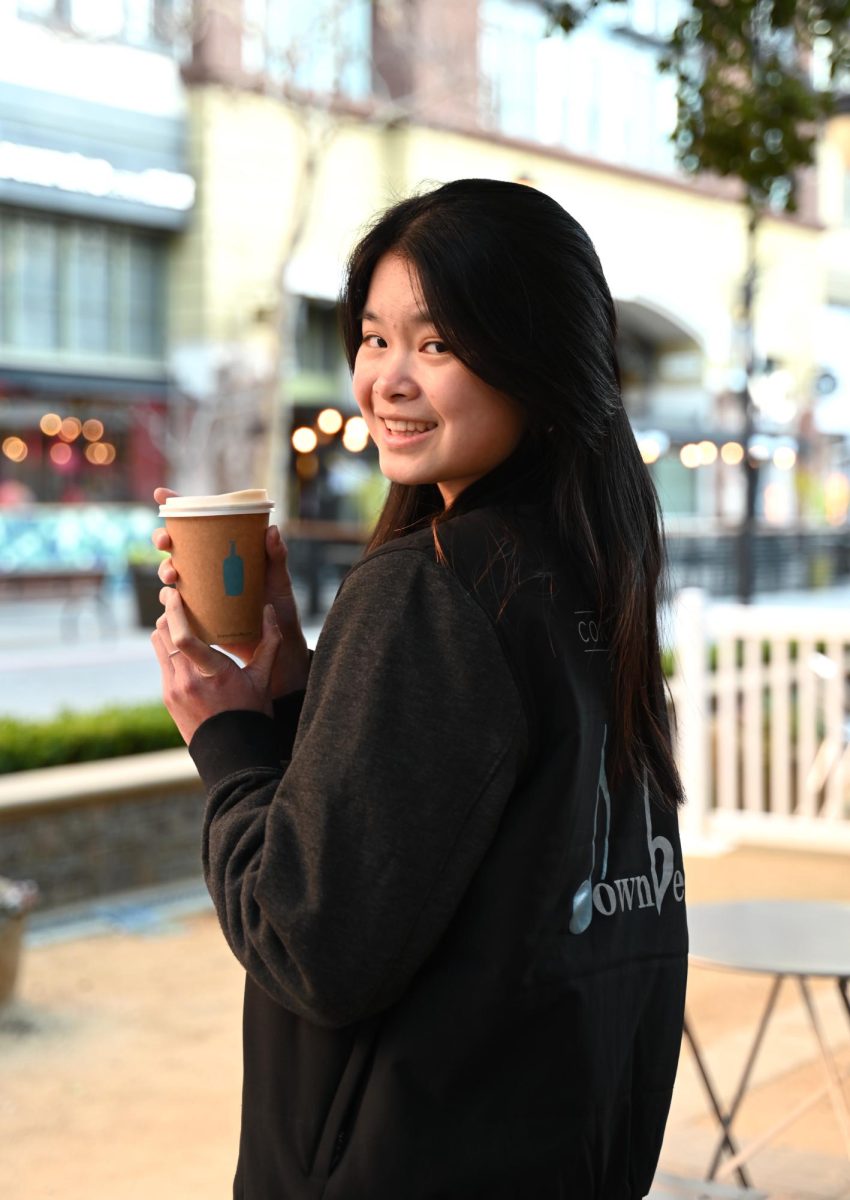
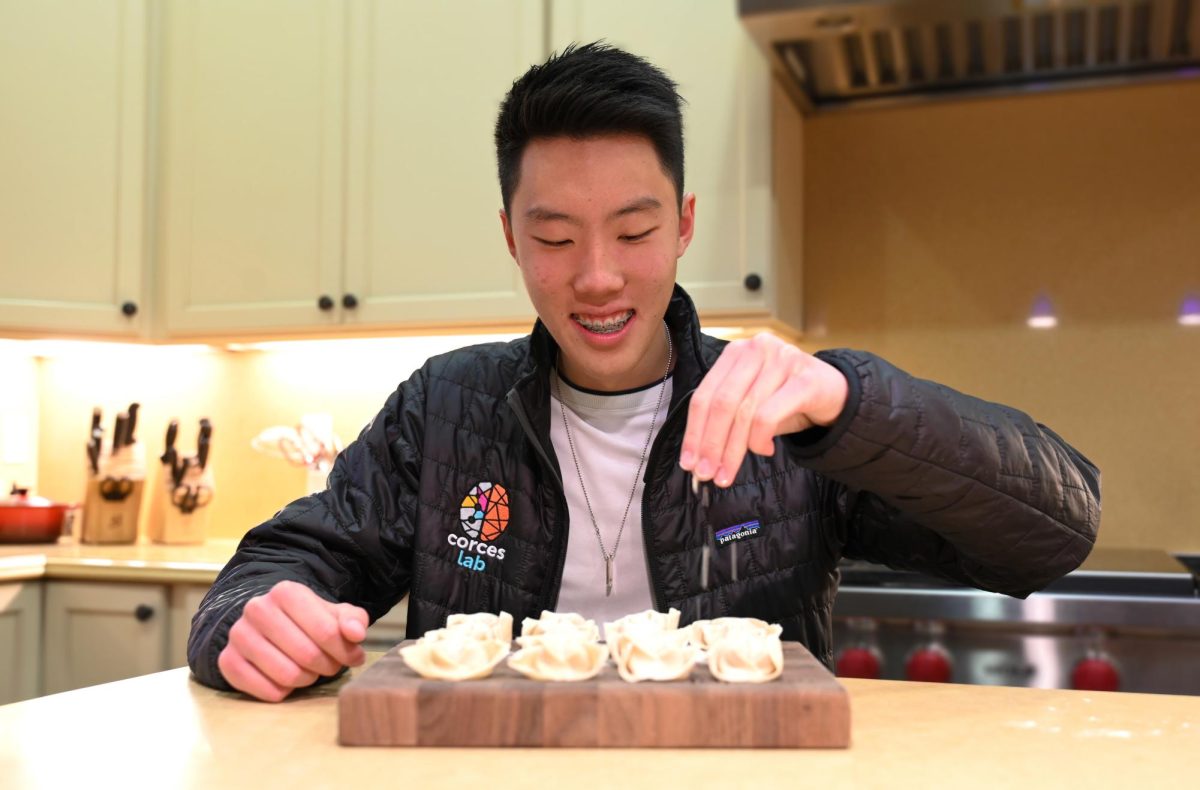
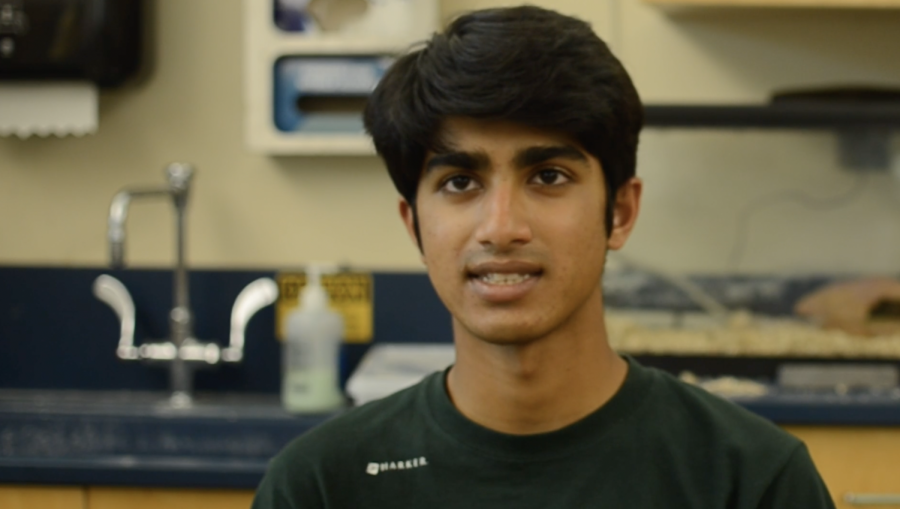
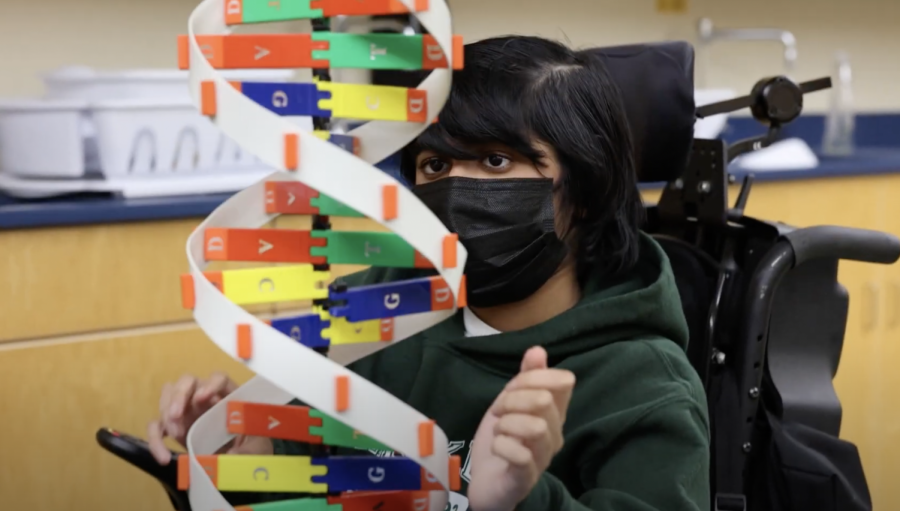
![“[Building nerf blasters] became this outlet of creativity for me that hasn't been matched by anything else. The process [of] making a build complete to your desire is such a painstakingly difficult process, but I've had to learn from [the skills needed from] soldering to proper painting. There's so many different options for everything, if you think about it, it exists. The best part is [that] if it doesn't exist, you can build it yourself," Ishaan Parate said.](https://harkeraquila.com/wp-content/uploads/2022/08/DSC_8149-900x604.jpg)
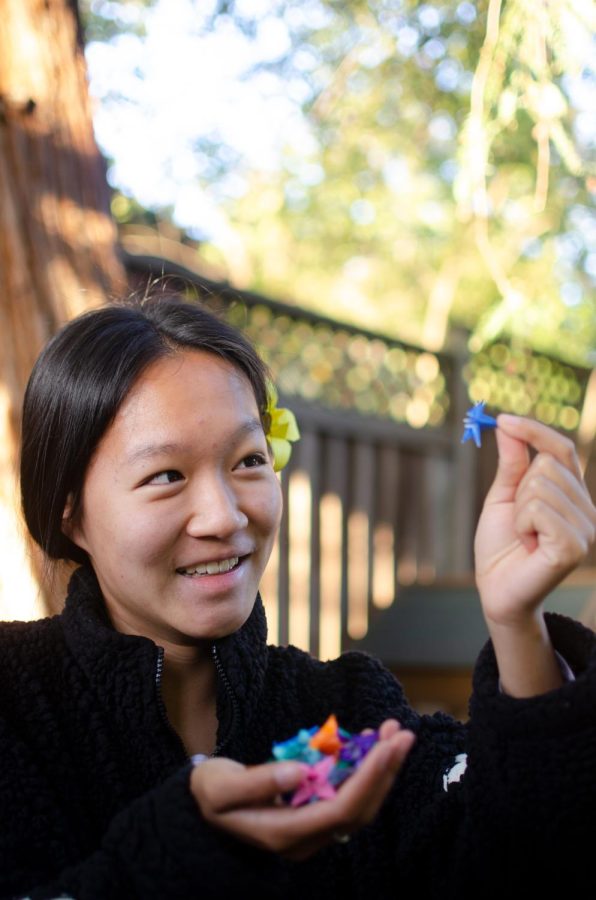
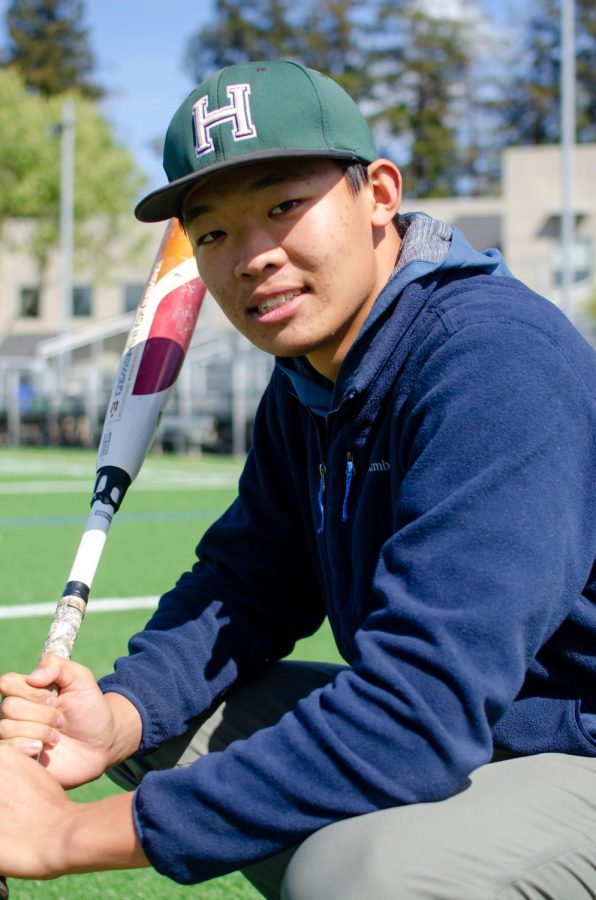
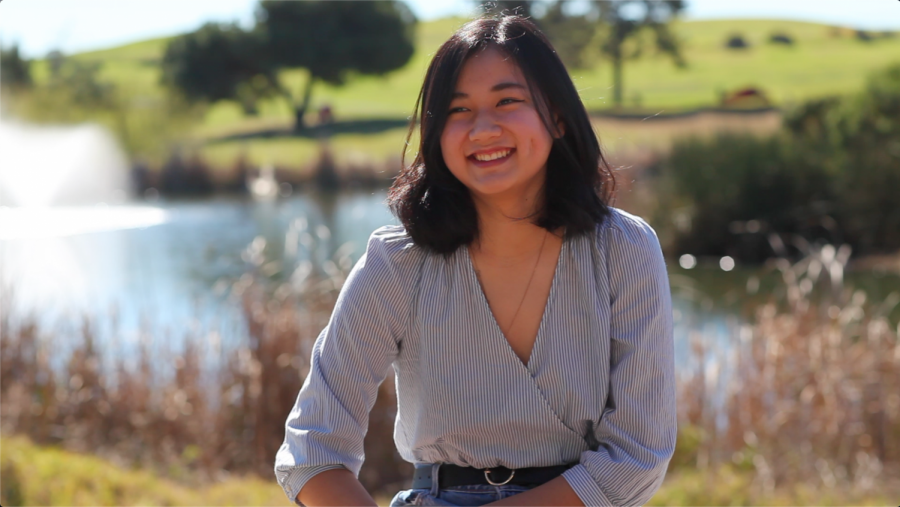
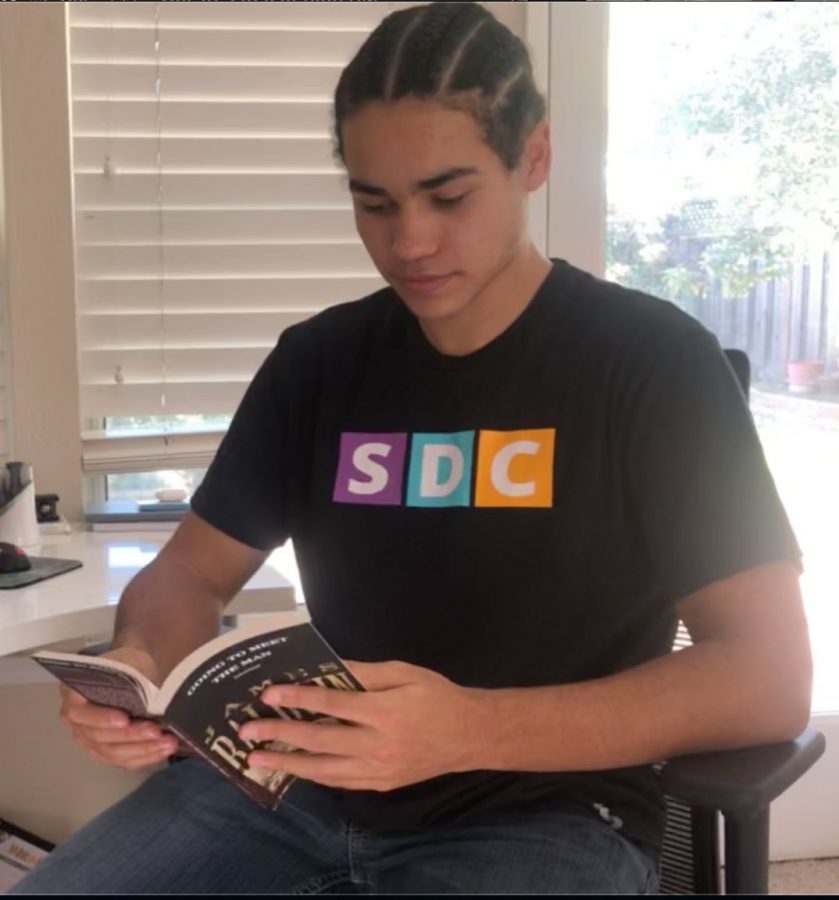
![“When I came into high school, I was ready to be a follower. But DECA was a game changer for me. It helped me overcome my fear of public speaking, and it's played such a major role in who I've become today. To be able to successfully lead a chapter of 150 students, an officer team and be one of the upperclassmen I once really admired is something I'm [really] proud of,” Anvitha Tummala ('21) said.](https://harkeraquila.com/wp-content/uploads/2021/07/Screen-Shot-2021-07-25-at-9.50.05-AM-900x594.png)
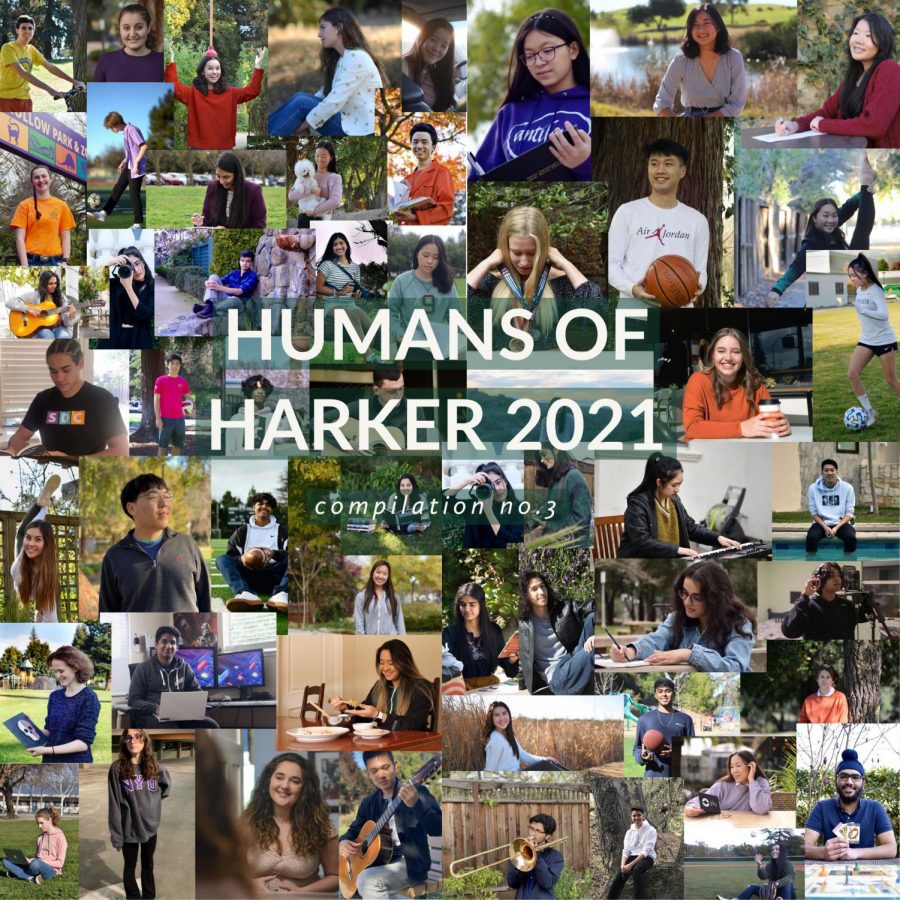
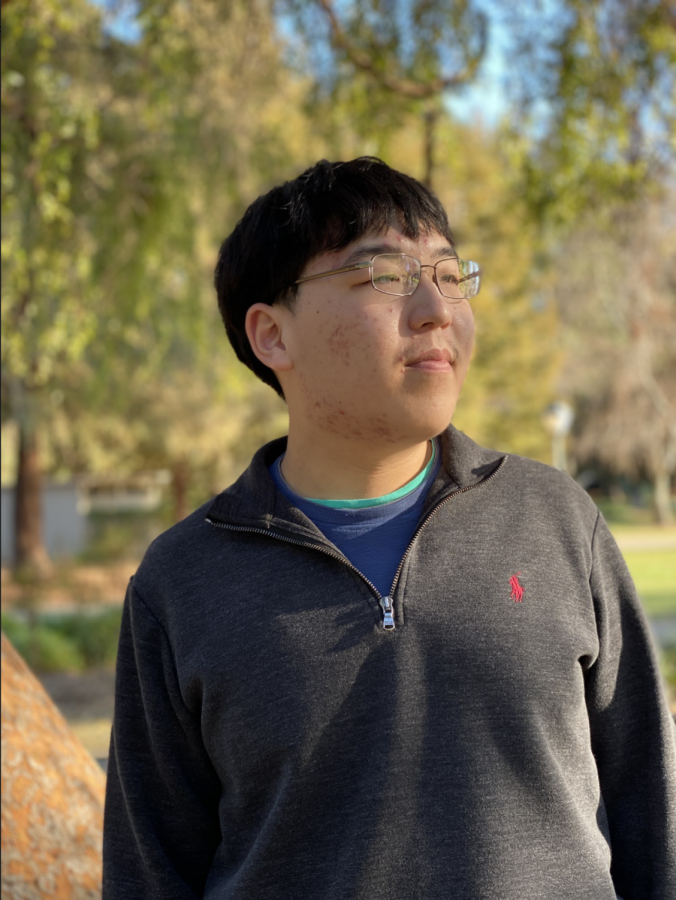
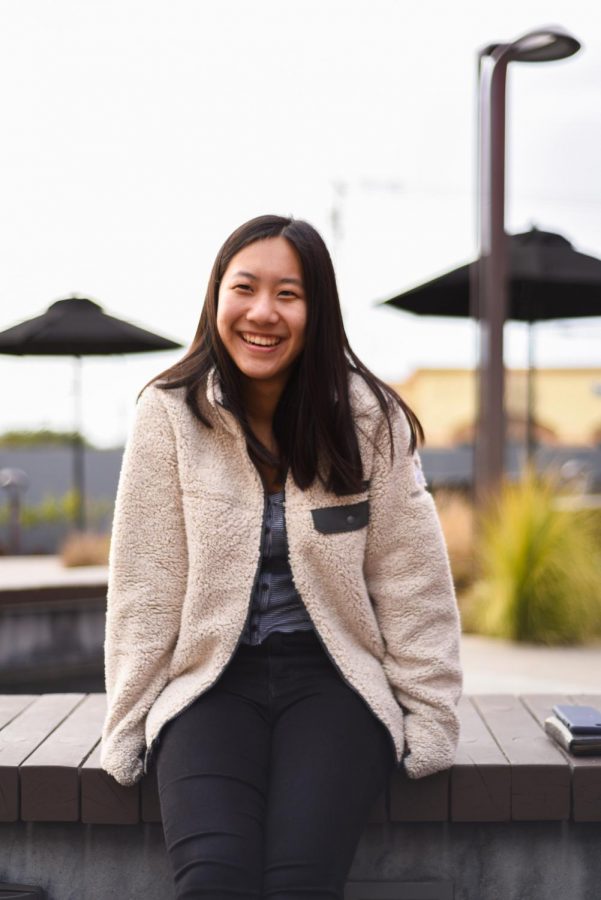


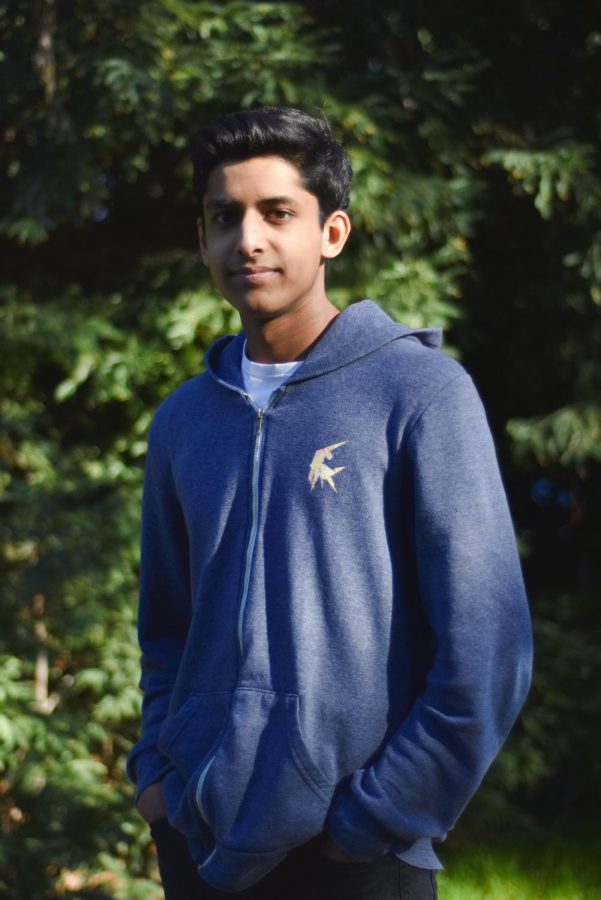

![“I think getting up in the morning and having a sense of purpose [is exciting]. I think without a certain amount of drive, life is kind of obsolete and mundane, and I think having that every single day is what makes each day unique and kind of makes life exciting,” Neymika Jain (12) said.](https://harkeraquila.com/wp-content/uploads/2017/06/Screen-Shot-2017-06-03-at-4.54.16-PM.png)


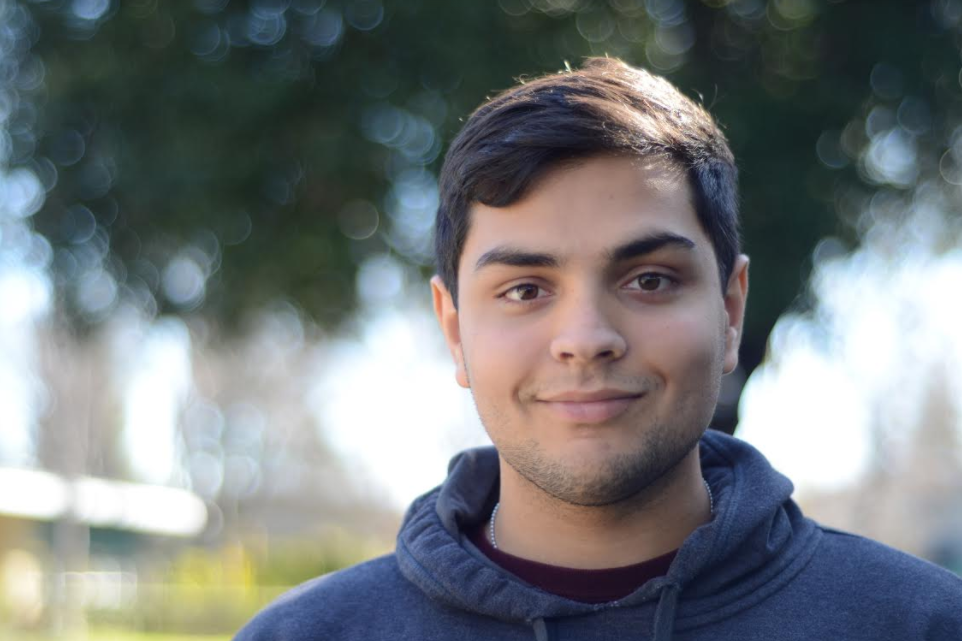
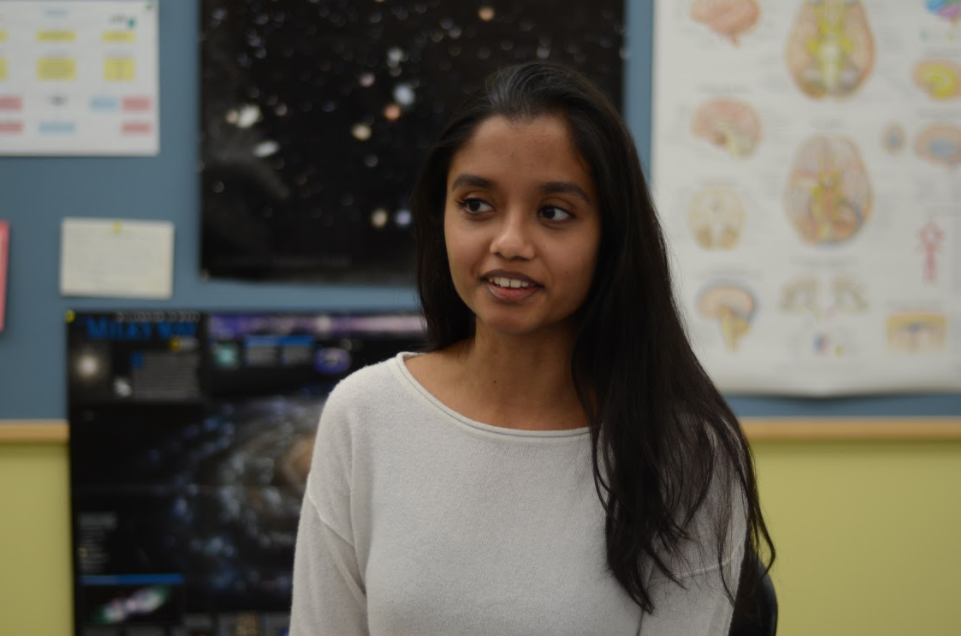
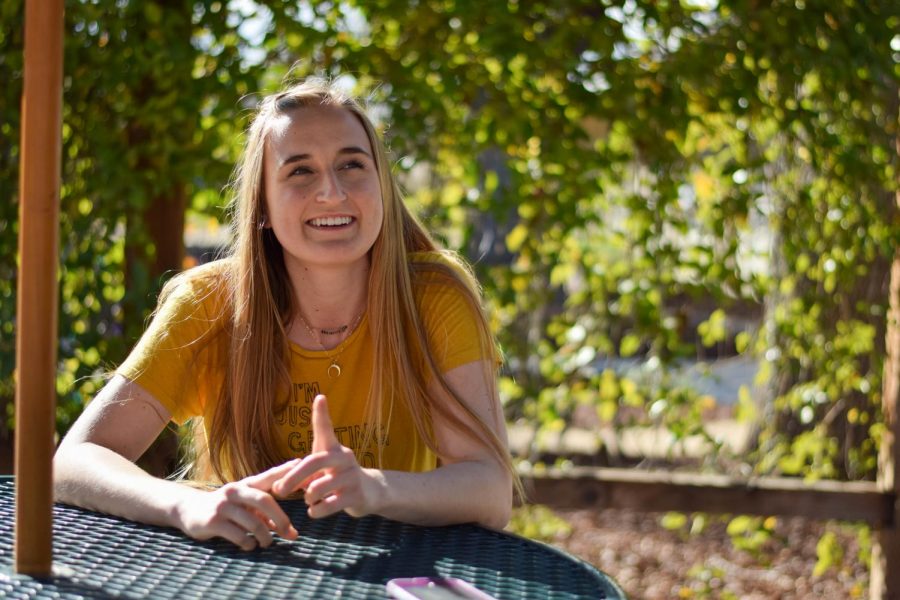
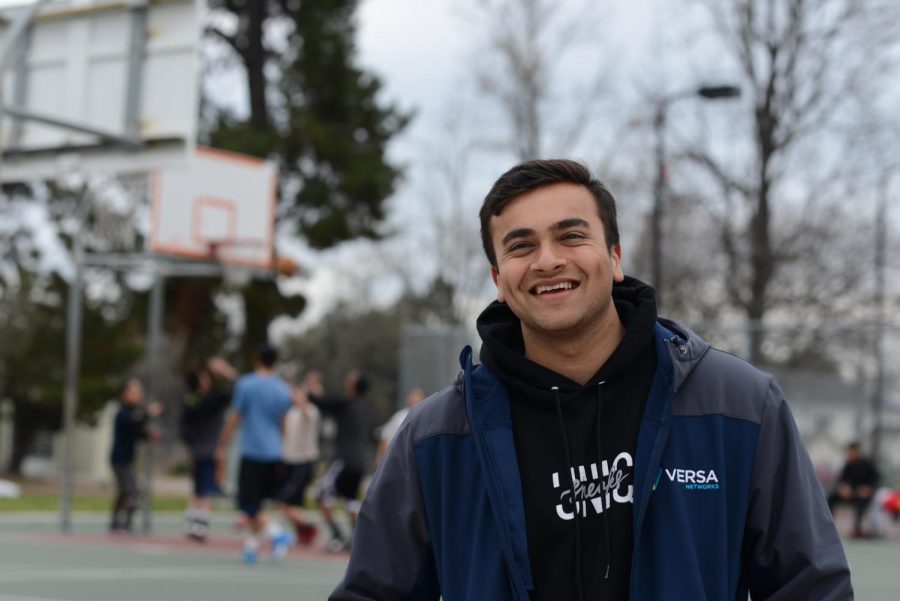
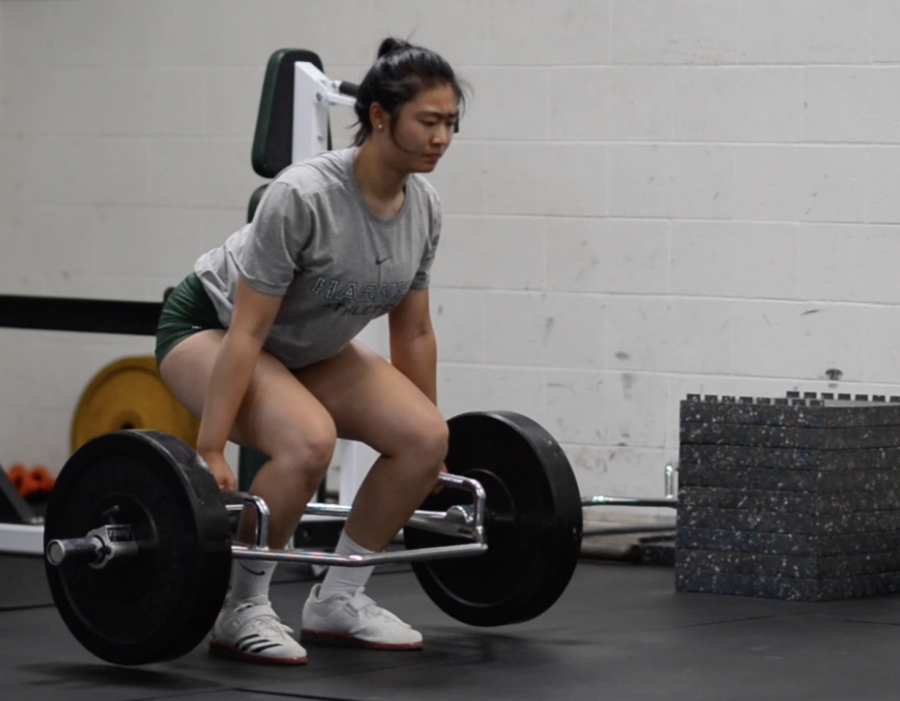

![“My slogan is ‘slow feet, don’t eat, and I’m hungry.’ You need to run fast to get where you are–you aren't going to get those championships if you aren't fast,” Angel Cervantes (12) said. “I want to do well in school on my tests and in track and win championships for my team. I live by that, [and] I can do that anywhere: in the classroom or on the field.”](https://harkeraquila.com/wp-content/uploads/2018/06/DSC5146-900x601.jpg)
![“[Volleyball has] taught me how to fall correctly, and another thing it taught is that you don’t have to be the best at something to be good at it. If you just hit the ball in a smart way, then it still scores points and you’re good at it. You could be a background player and still make a much bigger impact on the team than you would think,” Anya Gert (’20) said.](https://harkeraquila.com/wp-content/uploads/2020/06/AnnaGert_JinTuan_HoHPhotoEdited-600x900.jpeg)
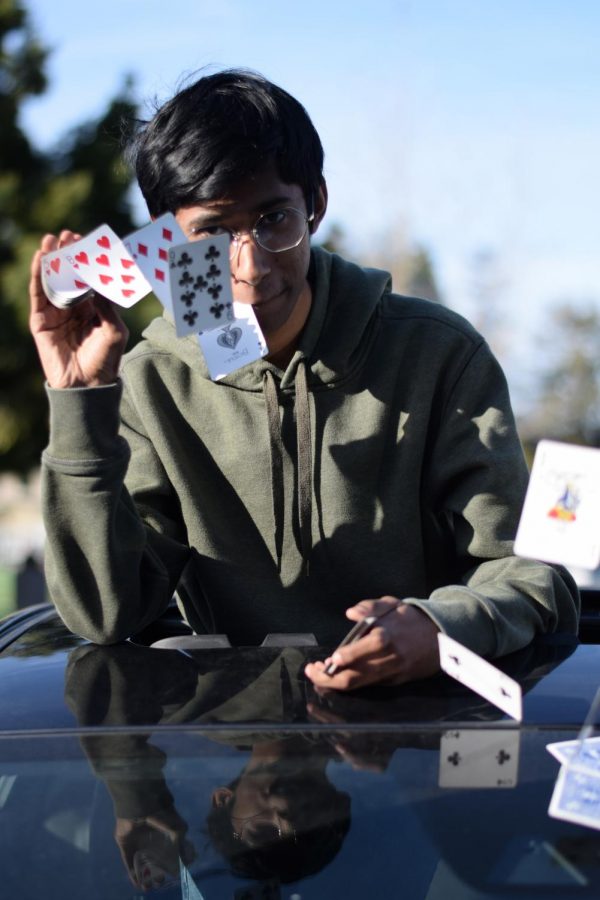
![“I'm not nearly there yet, but [my confidence has] definitely been getting better since I was pretty shy and timid coming into Harker my freshman year. I know that there's a lot of people that are really confident in what they do, and I really admire them. Everyone's so driven and that has really pushed me to kind of try to find my own place in high school and be more confident,” Alyssa Huang (’20) said.](https://harkeraquila.com/wp-content/uploads/2020/06/AlyssaHuang_EmilyChen_HoHPhoto-900x749.jpeg)
